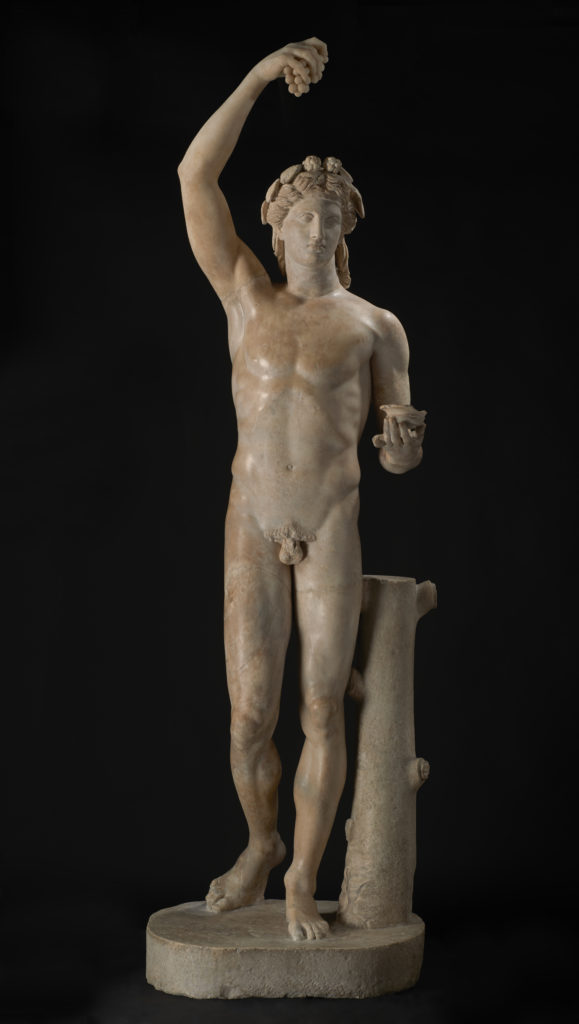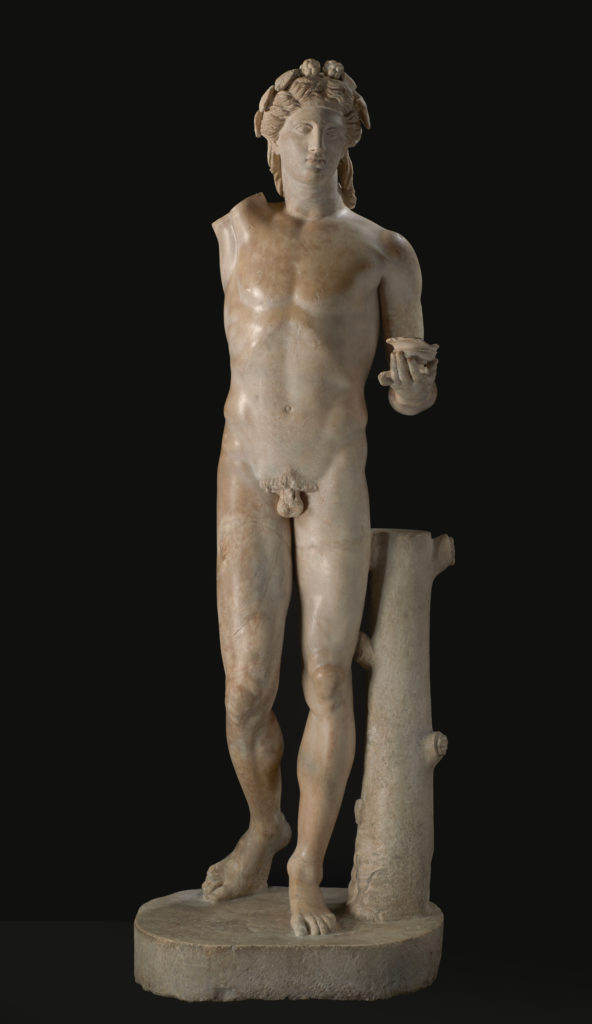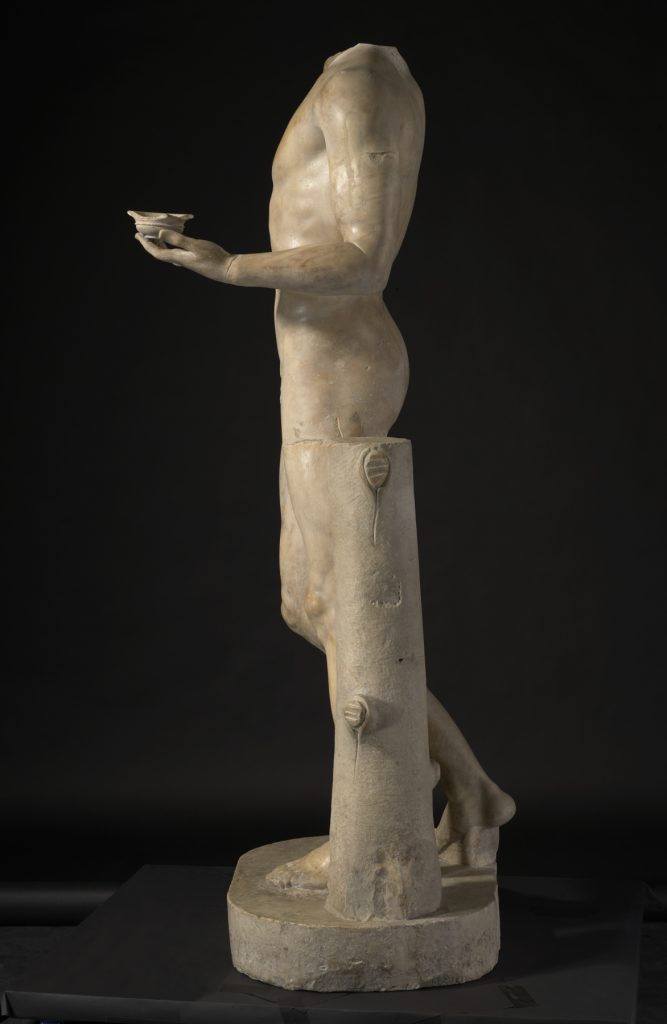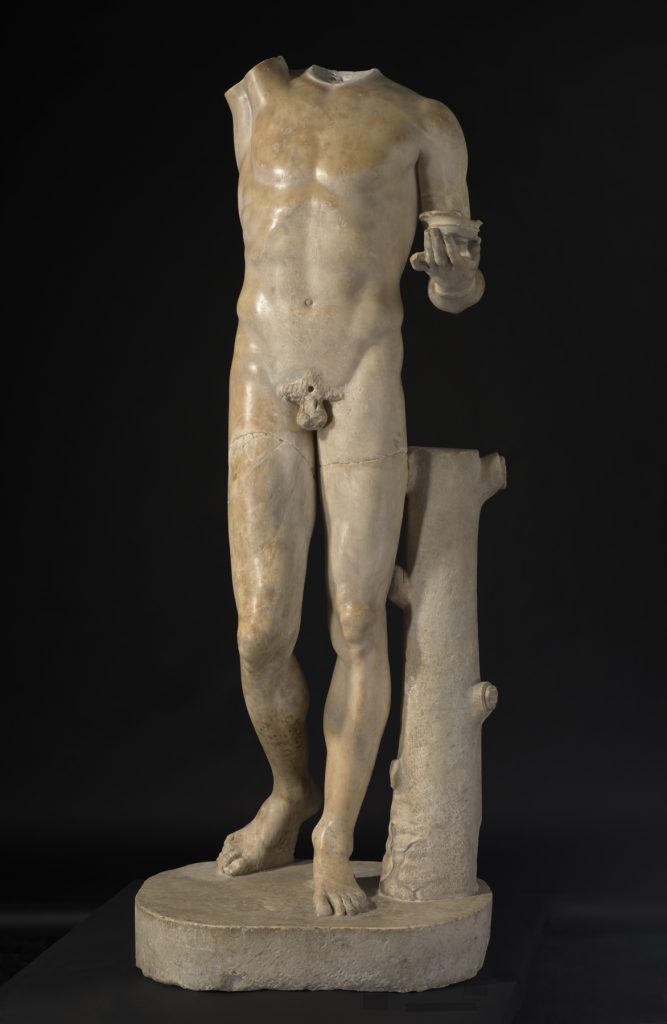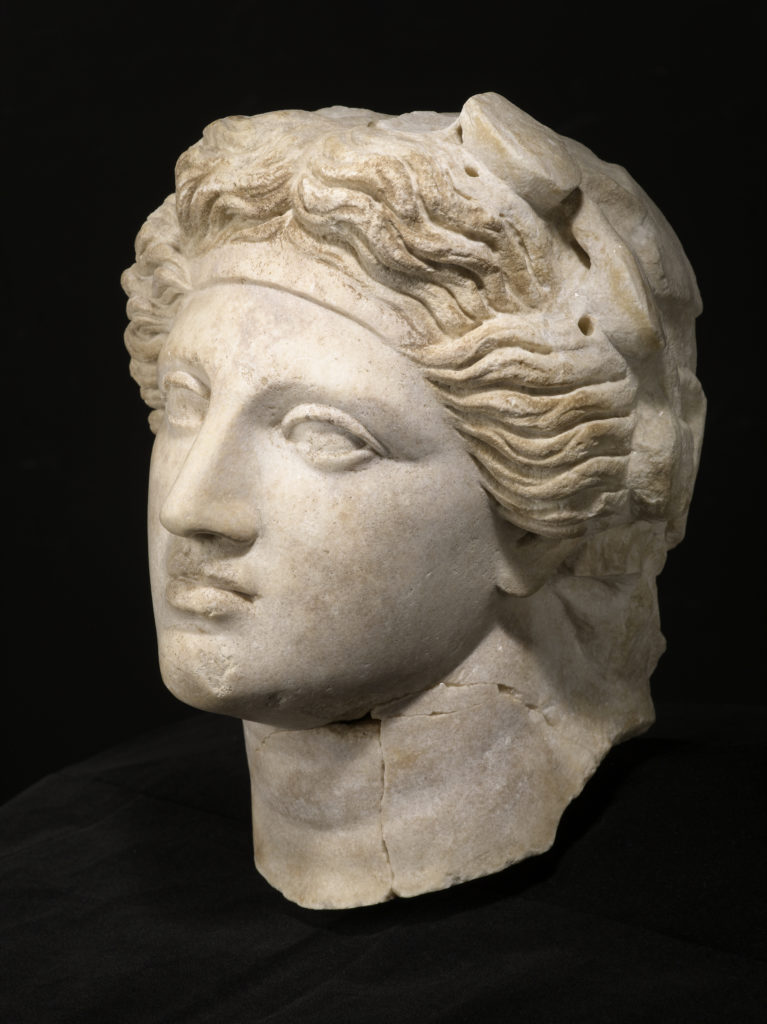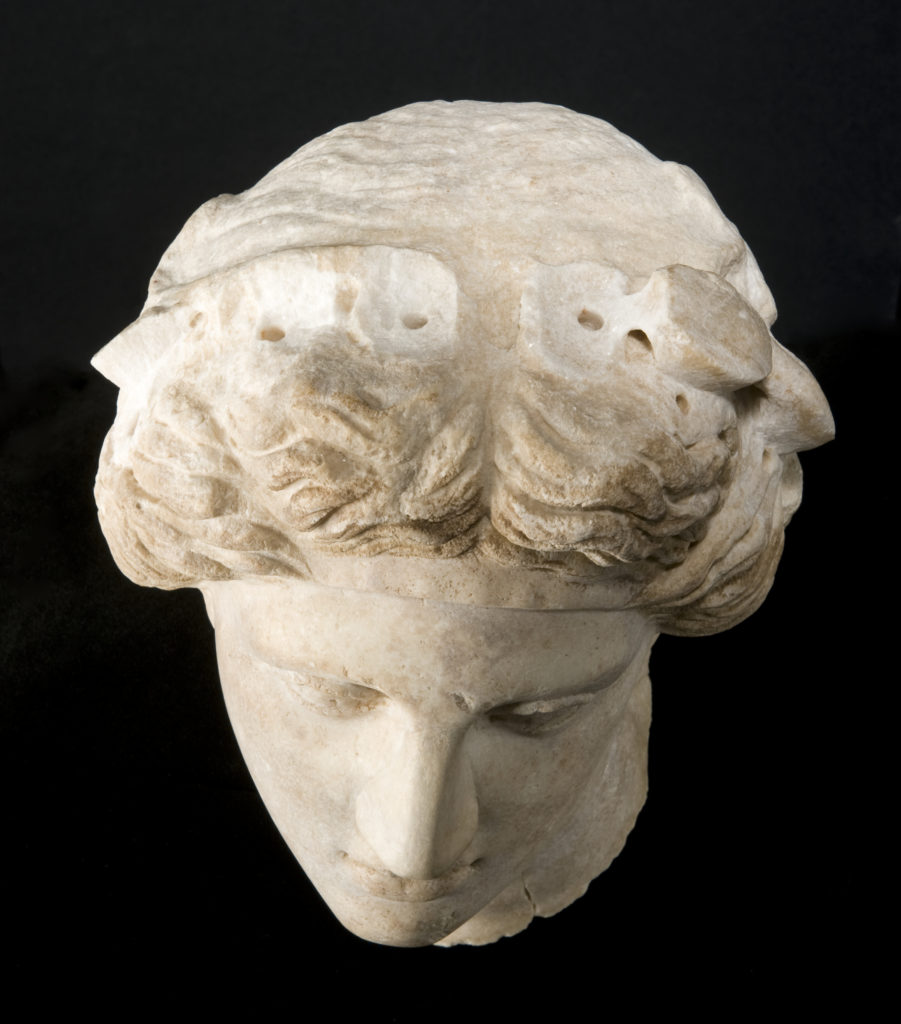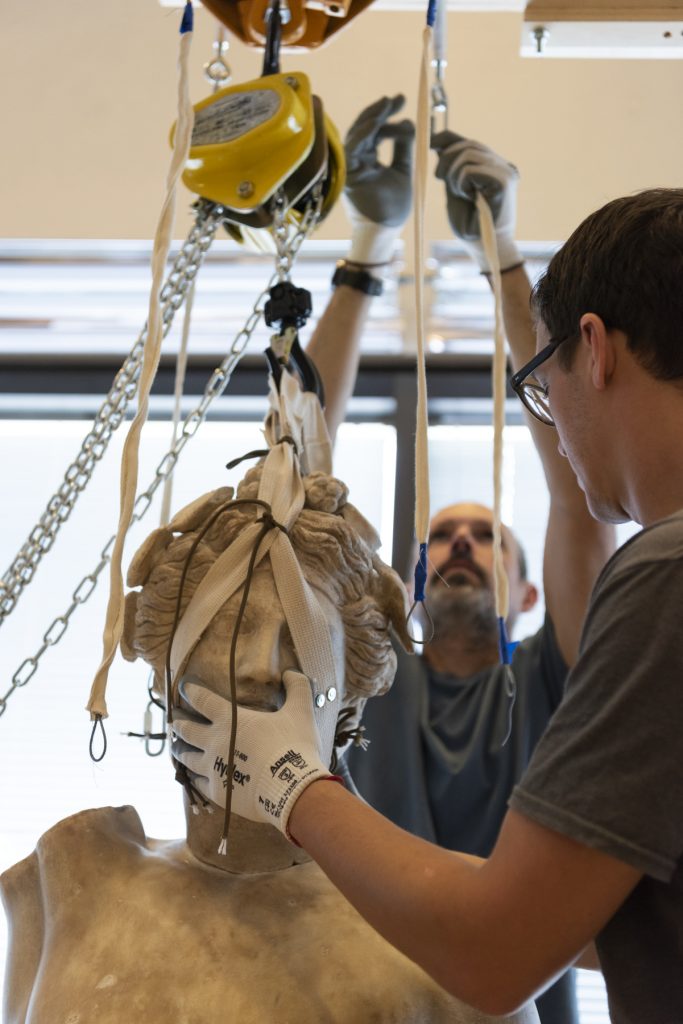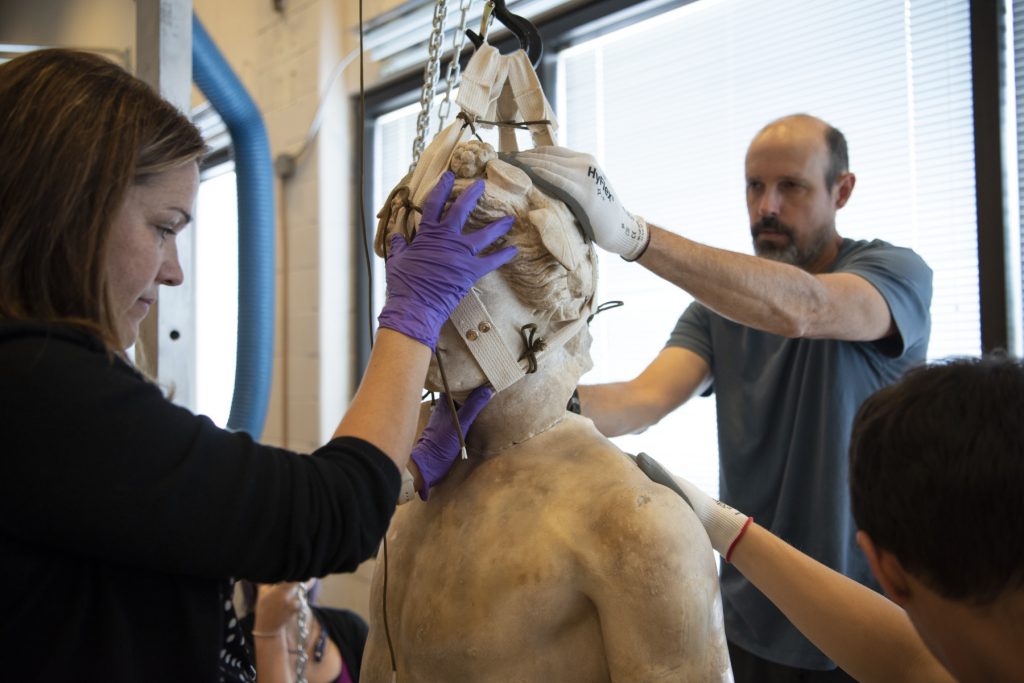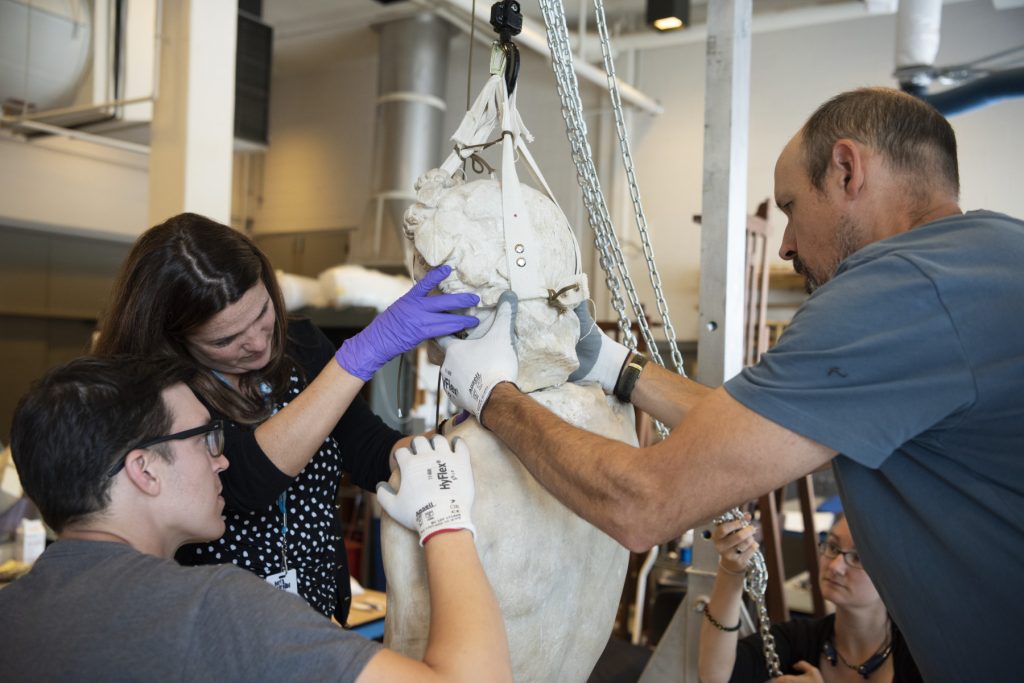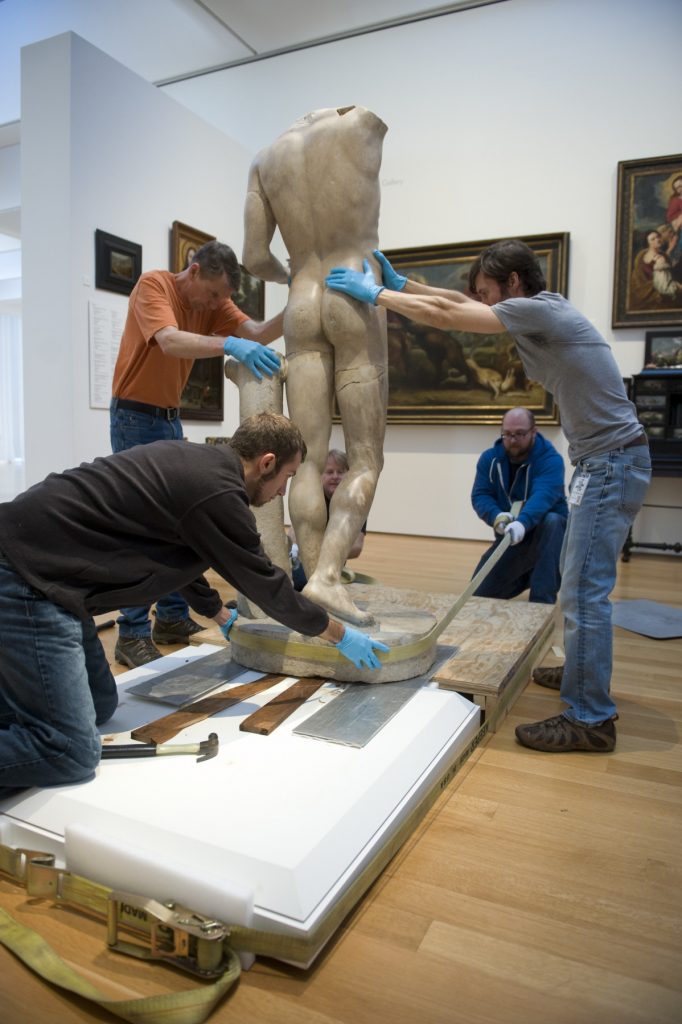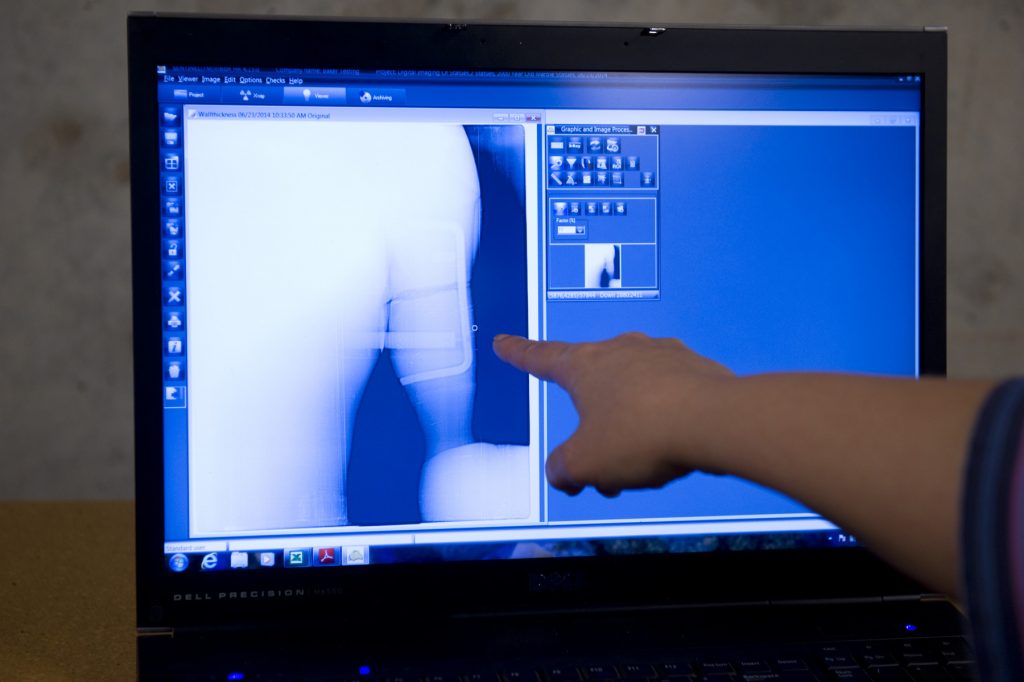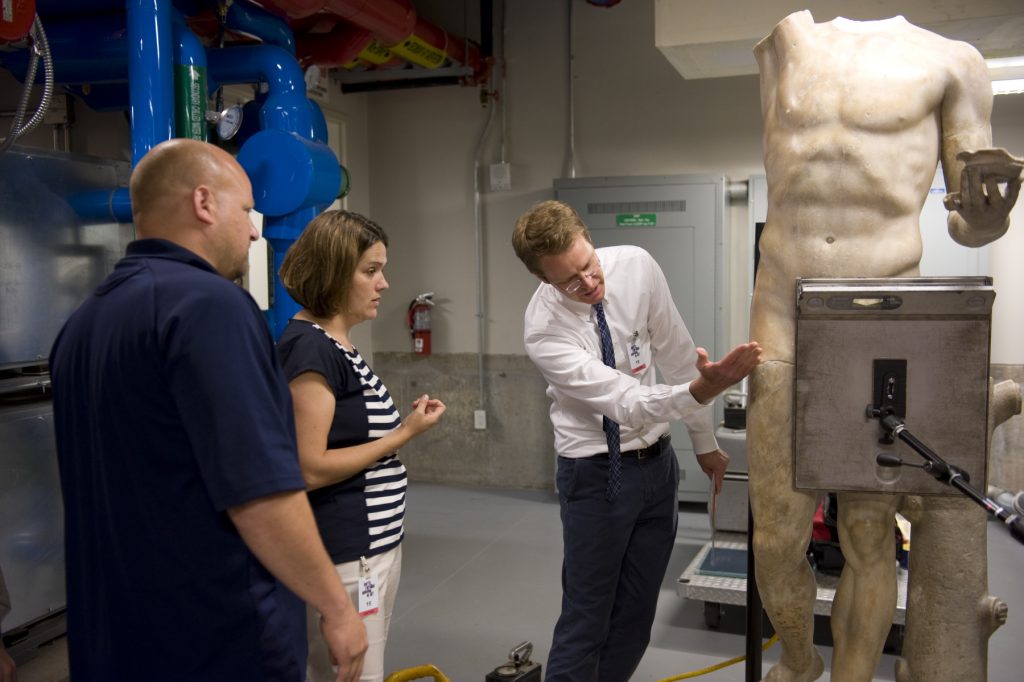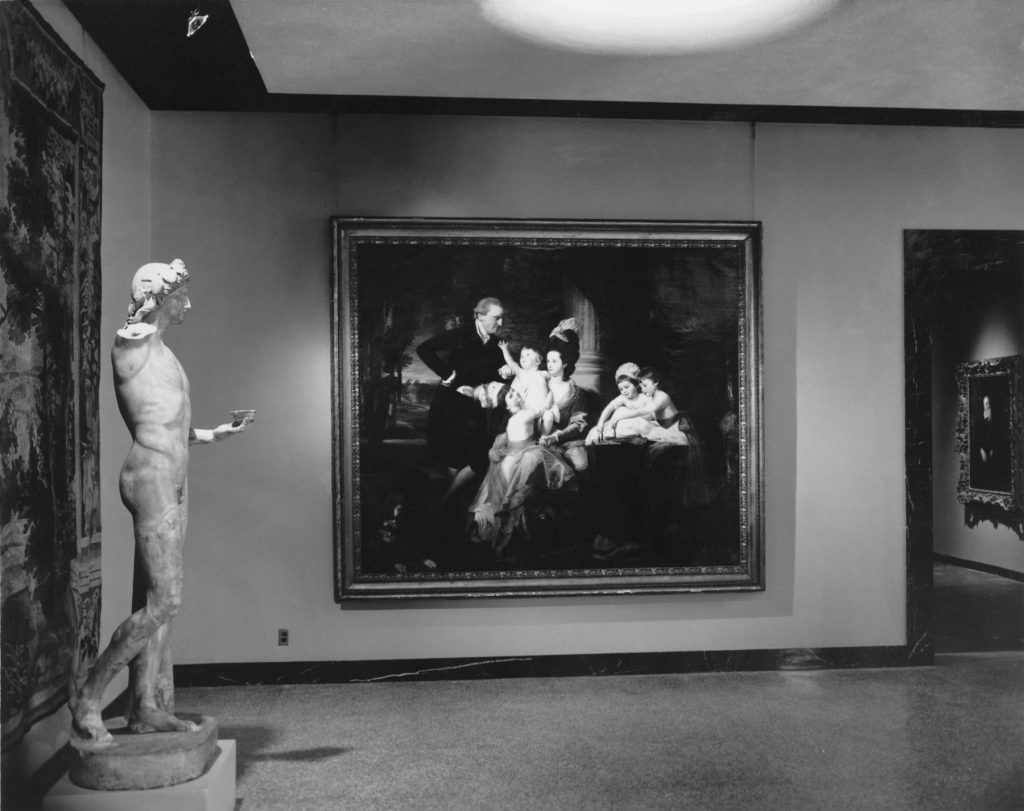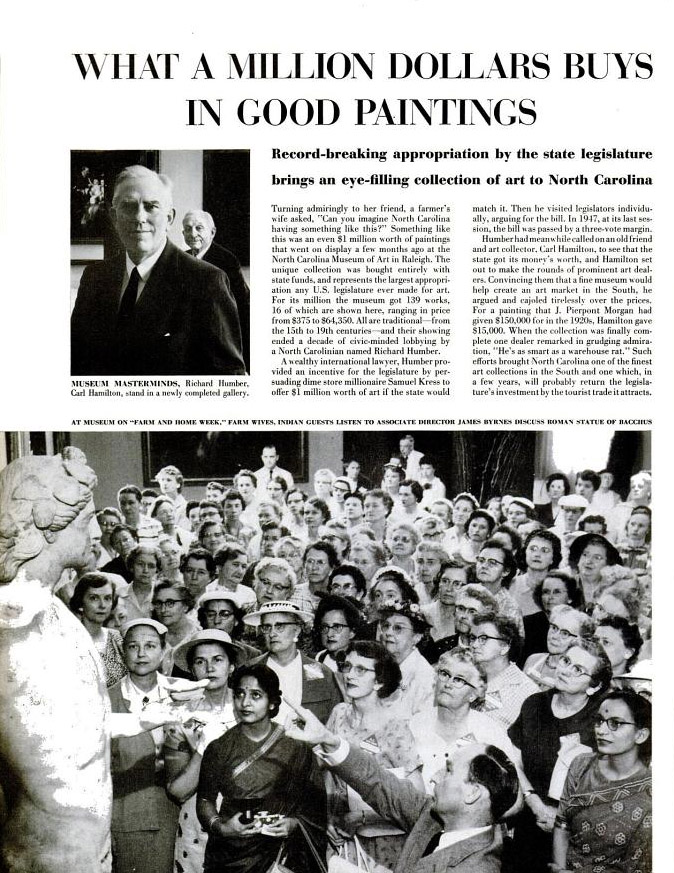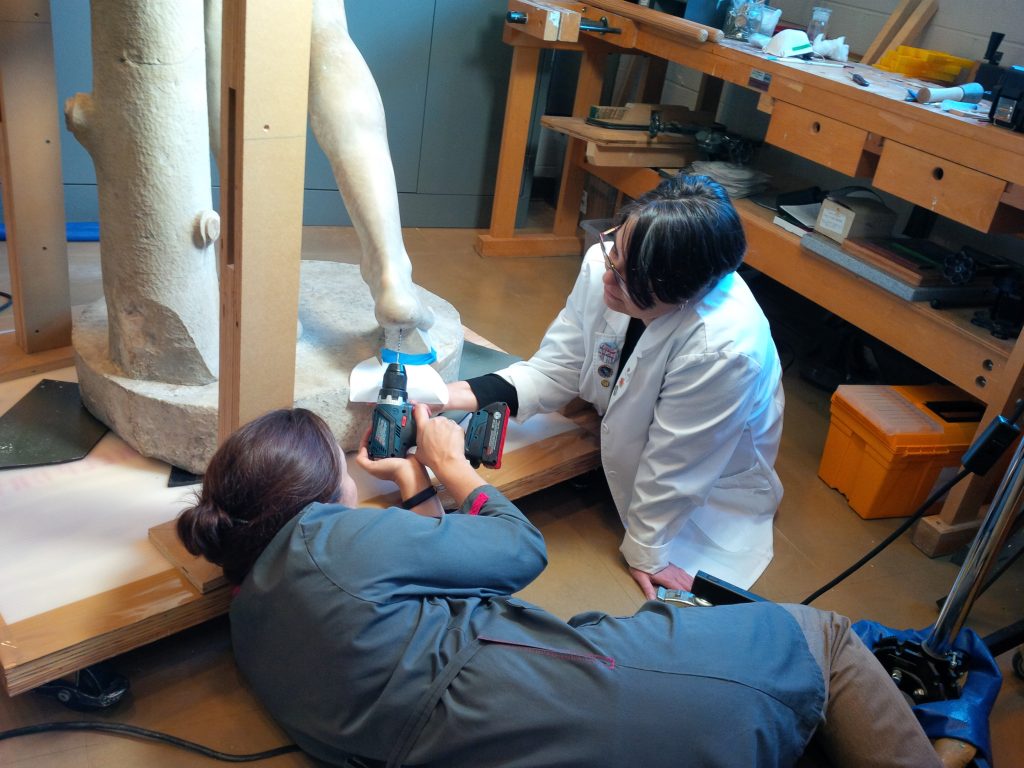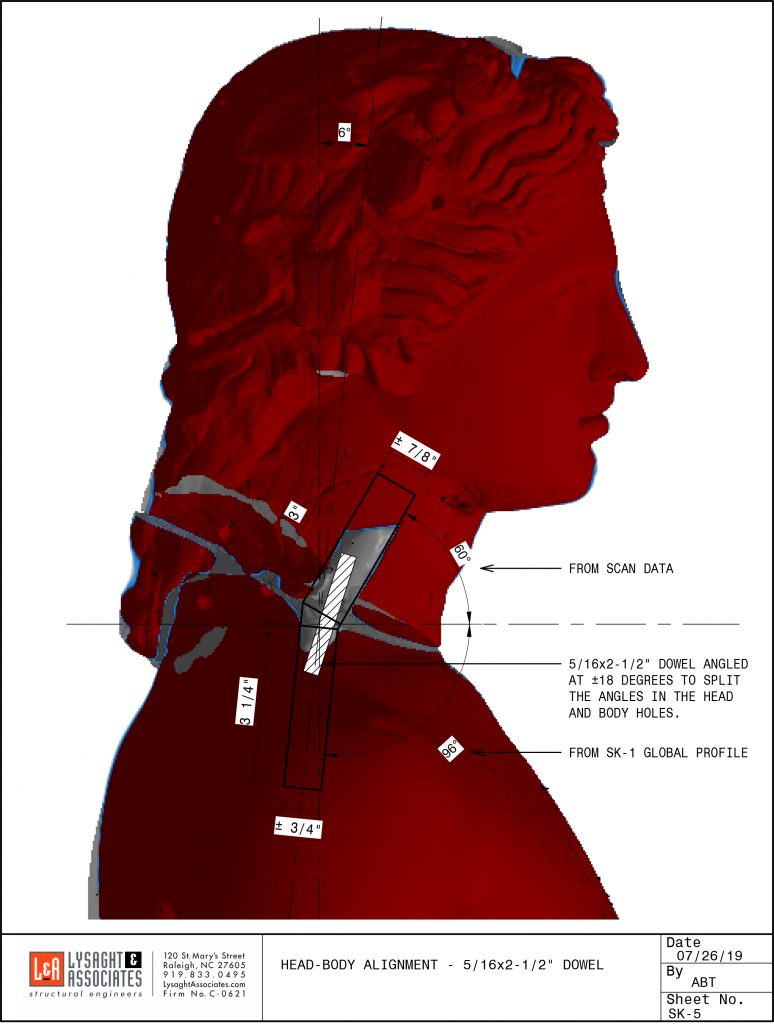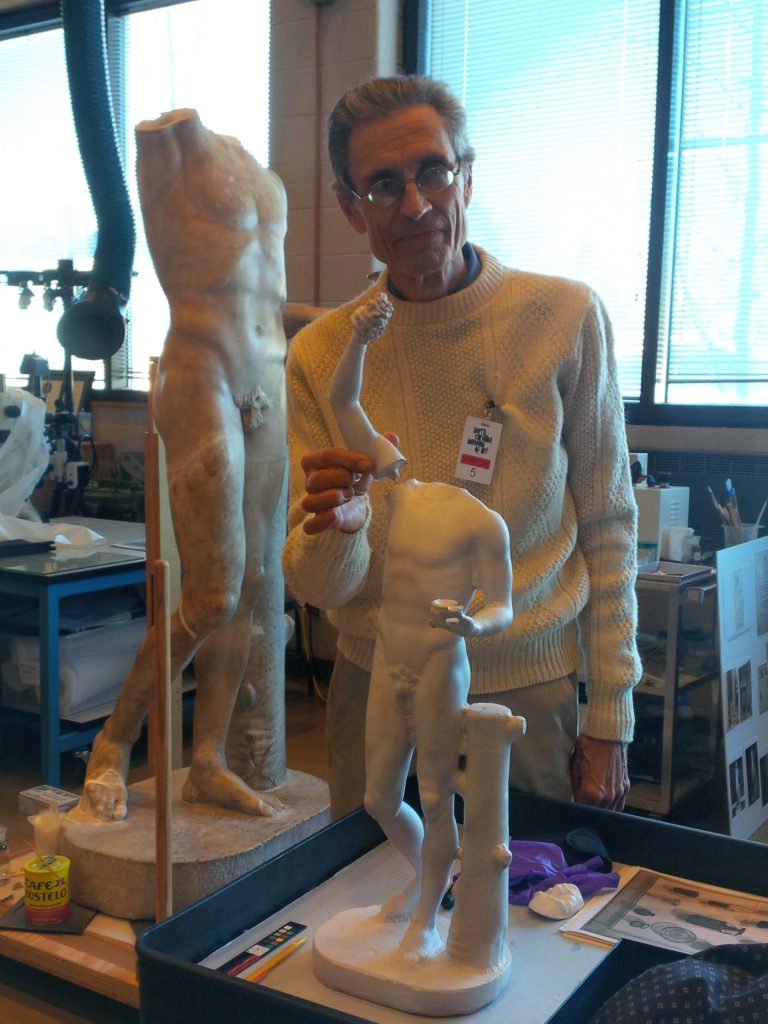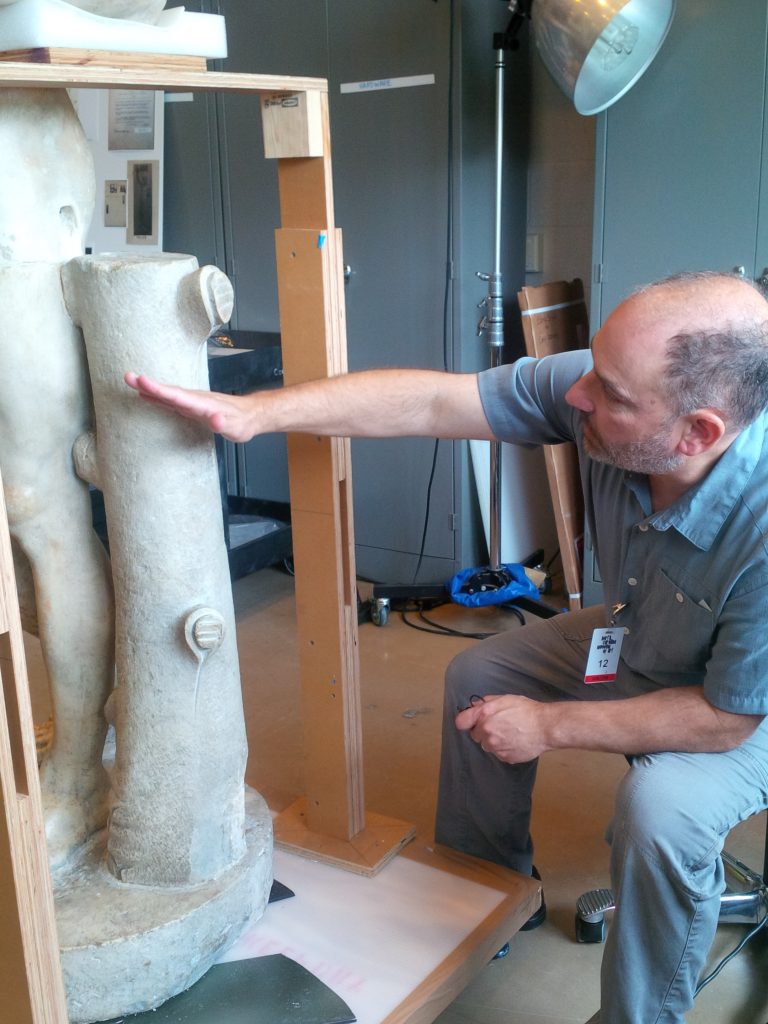Statue of Bacchus (work of art)
Artwork Info
About
Key Ideas
- Bacchus was the Roman god of wine, fertility, and pleasure. He was known as Dionysus in Greece. This sculpture depicts him as a young man wearing a diadem (jeweled headband) and an ivy wreath crown. The young god holds a bunch of grapes over his head in his right hand and a drinking cup in his left hand. The grapes and the cup are objects that are associated with wine.
- The ancient worship of Bacchus in Rome likely began in southern Italy. Although the cult rituals were kept secret, research has shown that these gatherings happened at night and involved drinking, shouting, dancing, and music. People of all sexes, ages, and social classes were welcomed.
- After the Roman senate ruled the cult of Bacchus to be immoral and destructive, the cult’s leaders were executed and its religious sites were destroyed. Roman people continued to worship the god of wine but they had to follow the senate’s new rules regarding worship rituals.
- Statue of Bacchus was a major conservation project at the NCMA. Parts of sculptures from different time periods were used to create the current version of the statue. Its original right arm was missing, but the NCMA conservation team was able to fully restore the statue based on historical and scientific research.
Learn More
Bacchus (known to the Greeks as Dionysus) was the Roman god of wine, fertility, and pleasure. He is thought to be the inventor of wine and is often identified by wine-related elements such as grapes, grapevines, and drinking vessels. Statue of Bacchus depicts the god of wine as a young man holding grapes in one hand and a drinking cup in the other. He wears a diadem, or jeweled headband, and an ivy wreath crown. His hair is parted in the middle and frames his face. His weight is supported by a tree trunk beside his left leg, and he appears to be in a relaxed state of joy.
The Roman worship of Bacchus most likely originated in southern Italy. Since the cult of Bacchus was a “mystery religion” with rituals that were kept secret, no one knows exactly what happened during the cult gatherings. Modern scholars have discovered that people of all sexes, ages, and social classes were welcome to participate in these nighttime gatherings, and that the worshippers drank, shouted, and danced to the beats of drums and cymbals. In 186 B.C.E. the Roman senate ruled the cult of Bacchus to be immoral and destructive. They eventually executed the cult’s leaders and destroyed its religious sites. The senate made strict rules regarding worship rituals, who could practice them, and how many people could participate.
This statue is the result of a seven-year conservation project at the NCMA. Between 2013 and 2020, Statue of Bacchus went through a major conservation treatment that involved piecing together parts from other statues. The conservation team used scientific and academic research to understand how the statue was put together, trace its history, and restore it to its original state. The current statue is made up of a rare second-century Roman torso, the head of a different ancient statue, and limbs, locks of hair, berries, and leaves from sculptures that were created in the late 18th or early 19th century. The right arm of this statue was missing before it came to the NCMA. An old photograph and an 1837 drawing of the sculpture revealed that the original statue held a bunch of grapes in its right hand. A new right arm was created in 2019 and attached to the sculpture.
Additional Resources
Resources for Teachers:
- Read an article about the NCMA’s Bacchus Conservation Project.
- Explore additional works that represent Dionysus and/or Bacchus.
- Learn more about the mystery cult of Bacchus.
Resources for Students:
- Watch a video to learn how a NCSU basketball player assisted the Bacchus Conservation Project.
- Watch a video about Bacchus.
- Watch behind-the-scenes videos of the Bacchus Conservation Project at the NCMA.
- View a similar sculpture and compare it to Statue of Bacchus.

